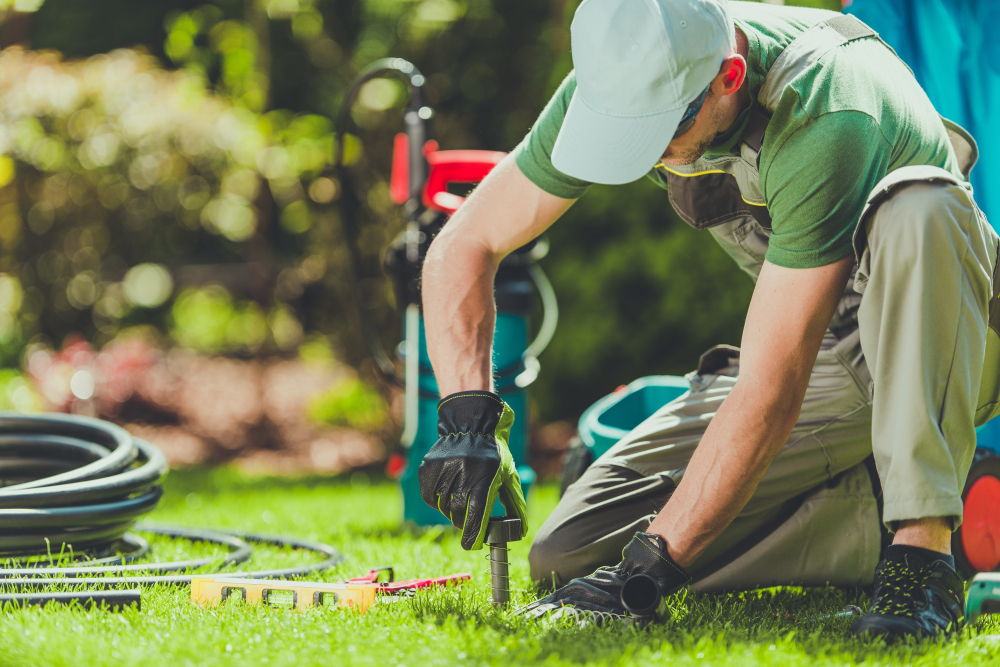Caring for Outdoor Art in Your Vegas Landscaping
Outdoor art refers to any artwork displayed or installed in an outdoor setting. This can include sculptures, murals, statues, fountains, and other forms of public art. Outdoor art is found in various locations, such as parks, gardens, plazas, and other public spaces. It can also be found on private property, such as in the gardens or yards of homes or businesses.
Outdoor art can serve various purposes, such as adding aesthetic appeal to a space, providing cultural or historical context, and serving as a focal point for a community. Outdoor art can also make a statement or convey a message. Many cities and towns have public art programs that commission artists to create pieces for public spaces.
Outdoor art can get made from a variety of materials, including metal, stone, wood, and glass. Some outdoor art gets designed to be permanent, while others are temporary or mobile. The installation of outdoor art can require a significant amount of planning and coordination, as it must be able to withstand the elements and be safe for the public to view and interact with.
Caring for outdoor art is important to ensure its longevity and continued enjoyment by the public. This can include regular cleaning, protecting the art from the elements, and making necessary repairs.
Protect from the Elements
Caring for outdoor art in your landscaping includes protecting it from the elements. The elements can cause damage to outdoor art over time, such as rusting metal, fading paint, and cracking or chipping of materials. To protect outdoor art from the elements, it is important to choose materials suitable for the climate and environment in which they will get displayed. For example, if the art gets exposed to high levels of moisture, then materials such as stainless steel or bronze may be a better choice than those prone to rusting, such as iron.
Another way to protect outdoor art from the elements is to regularly clean and maintain it. This can include washing the art with a mild detergent and water or using a specialized cleaner if the art gets made of certain materials. It is also important to regularly check the art for signs of damage, such as rust or cracks, and to address any issues as soon as they get identified.
Another way to protect outdoor art from the elements is to place it in a location protected from the elements. For example, if the art is in an area exposed to strong winds, it may be beneficial to place it in a sheltered area such as a courtyard or garden. Additionally, it is also a good idea to place outdoor art in a location that is not exposed to direct sunlight for long periods of time, as this can cause fading or discoloration of the materials.
Finally, another way to protect outdoor art from the elements is to use protective coatings. Such coatings will help to prevent rust, fading, and UV damage, and they can get applied to metal, wood, stone, and other materials.
Proper Placement
Proper placement of outdoor art in your landscaping is an important aspect of caring for it. The location of the art can greatly impact its longevity and overall appearance.
Firstly, it is important to consider the art’s relationship to its surroundings. For example, if the art is a sculpture, it may be more visually appealing when placed on a pedestal or in a garden bed rather than on the ground. Additionally, if the art is a fountain, it may be more appropriate to place it in a pond or near a pool rather than on a dry, barren patch of land.
Secondly, it is also important to consider the art’s relationship to the sun and the wind. Direct sunlight and strong winds can cause fading and damage to some materials, so it is best to place the art in a location that is protected from these elements. For example, place the art under a tree or a covered patio, or place it in a location that receives dappled sunlight instead of direct sunlight.
Thirdly, it is also important to consider the art’s relationship with the visitors. Outdoor art is meant to get enjoyed, so it is best to place it in a location that is easily accessible and visible to visitors. For example, place the art near a walkway or a seating area.
Finally, it is also important to consider the art’s relationship to the overall design of the landscaping. Outdoor art should get placed in a way that enhances the overall aesthetic of the space rather than detracting from it. For example, if the landscaping has a natural and rustic theme, it may be best to choose outdoor art that reflects that theme, such as a rustic sculpture or a natural stone fountain.
Keep an Eye on the Weather
Caring for outdoor art in your landscaping requires attention to the elements that can potentially damage it. One of the most important things to keep in mind is to protect your art from the elements. This can include providing shelter from direct sunlight, rain, and wind. UV protective coatings can get applied to metal or glass pieces, while canvas or paper pieces should get kept in a covered area or displayed under a protective canopy.
Keeping an eye on the weather can also help protect your outdoor art. It’s important to be aware of any forecasted storms or extreme weather conditions and take necessary precautions to protect your art. This can include bringing pieces indoors or covering them with tarps or other protective materials. By taking the time to care for outdoor art, you can ensure that people will enjoy it for years to come.
Consult with a professional art restorer or conservator if you notice any damage or deterioration on your outdoor art. They can help you to determine the best course of action to repair or restore your art.
Share this post!